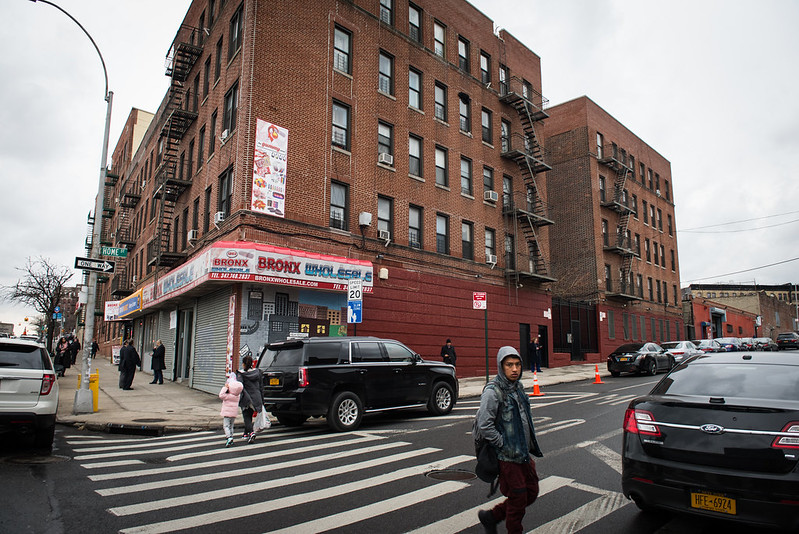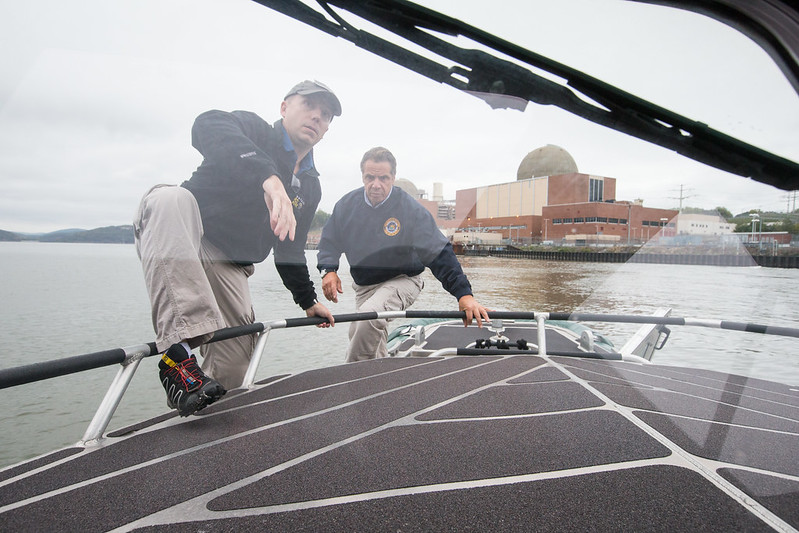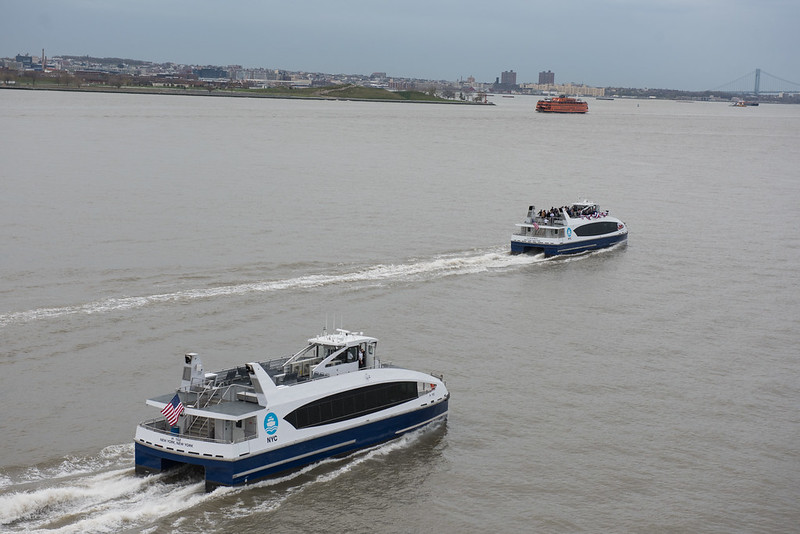Renters are Facing an Unprecedented Emergency; We Need a Federal Answer, Not a Rent Strike

An economic crisis is upon us (photo: Edwin J. Torres/Mayor's Office)
For millions of American families, making rent each month is a familiar struggle: last October, a new analysis found that half of American renters were spending more than they could afford on monthly rent payments. But now, with the COVID-19 pandemic ushering in a new economic crisis and the real unemployment rate at its highest level since the height of the Great Depression, America’s housing affordability crisis is a true economic emergency. An unprecedented number of households will be newly unable to pay rent – and that threatens our whole economic system.
An emergency of this magnitude requires a swift and massive response from the federal government, which thus far has not materialized. As a way to press the issue, some are calling for a statewide rent strike in New York. But this approach will harm the affordable housing stock and the tenants who live in it. Rent is required to keep the buildings maintained, staffed, and clean. Rent strikes by tenants who are able to pay also hurts the ability of an owner to help those tenants who really need it.
This problem will require a multifaceted solution set, but must be centered around direct assistance to renters in the form of flexible emergency rental assistance and far more robust stimulus payments.
It is clear that renters need immediate help: last month, a nationwide survey by the National Multifamily Housing Council found that just 69 percent of American renters paid their rent by April 5, a year-over-year decline of 12 percentage points. While the figure rose to 84 percent a week later, there is evidence that these trends are more pronounced in the areas hardest-hit by the coronavirus, like New York City.
There is no question May will be worse. The national economic crisis has deepened, with tens of millions more out of work, and those who were struggling a month ago are likely facing even tighter budgets today. That is a real threat not just to the individual families but also to our entire economic system.
The affordable housing stock has thinner margins and less cash flow than its market rate counterparts and tends to have less in reserves. Many New York State Association for Affordable Housing (NYSAFAH) member buildings have already seen far lower levels of rent collection than the surveys of residential buildings as a whole have reported.
Rent payments ensure that families live in quality apartments maintained with basic services. It pays the salary of the building service workers who maintain sanitary conditions. Crucially, a suspension of rent would also freeze liquidity that is used to build the affordable and market-rate housing New Yorkers, and Americans across the country, desperately need to ease the housing crisis in the first place.
Rental assistance will keep that system in place while also protecting the most vulnerable among us. By building on the foundation set by the Emergency Solutions Grant (ESG) program, that assistance can be rapidly distributed, providing immediate housing security to American renters while preserving the sanctity of their buildings.
The fight ahead will not be easy, but it is absolutely necessary. We must all band together and raise our voices as one to demand the real protections that American renters deserve.
***
Jolie Milstein is the president and CEO of the New York State Association for Affordable Housing. On Twitter @NYSAFAH.
***
Have an op-ed idea or submission for Gotham Gazette? Email This email address is being protected from spambots. You need JavaScript enabled to view it.
The Pandemic Preys Upon Pollution’s Victims and Shows the Power Path Ahead

Governor Cuomo near Indian Point (photo: governor's office)
A silent and invisible killer, the novel coronavirus attacks the most fundamental human function that sustains life: our ability to breathe. To breathe properly, human beings need healthy lungs and clean air, specifically oxygen. And if lungs are compromised, there’s an even greater need for clean air.
As deaths in New York from COVID-19 surpass 17,000, those living in the pandemic epicenter face the compounding threat of substantially increased air pollution due to the imminent closure of one of the state’s largest carbon-free sources of power, the Indian Point nuclear power plant. The replacement power, largely derived from new and existing gas-fired power plants, will not only generate pollutants hazardous to human health, but will also (conservatively) emit 10-15 million tons of greenhouse gas emissions (GHGs), measured in carbon dioxide equivalents (CO2e), each year.
Greenhouse gases, which contribute to global warming, are invisible killers, much like COVID-19. For New Yorkers, air pollution and global warming are a double-whammy. It becomes a devastating and deadly triple-whammy for New Yorkers coping with COVID-19. If “Job one is saving lives,” as Governor Cuomo has said, then Indian Point must remain open.
We applaud the governor’s deference to science, data, and qualified professionals in deploying bold policies to respond to the pandemic. His recent prowess for data-driven decision-making is how all policy should be formulated. “Give me the facts,” he said of his mantra at a recent press conference. Facts are indeed the best antidote to irrational fear and anxiety.
While special interest groups such as Riverkeeper have spent years fear-mongering about Indian Point specifically, and nuclear power in general, here are the simple facts.
New York City is the second-largest consumer of power in the world, using 53 terawatt-hours per year. Indian Point generates 80% of the region’s carbon-free grid power. Generating the equivalent power from fossil fuels would increase the entire state’s electricity sector greenhouse gas emissions by 27-29%, rendering New York’s newly-enacted climate goals impossible to achieve.
“Natural” gas is mostly methane, which has 86 times the global warming potential of CO2 over a 20-year time-frame. A new analysis by the National Oceanic and Atmospheric Administration (NOAA) finds methane levels at an all-time high at 1875 parts per billion, the highest levels since record-keeping began in 1983. Most alarming, however, is that last year saw the single biggest increase in two decades. This accelerating rise in GHGs is a fact that is now keeping climate scientists up at night.
Burning fossil fuels also generates other harmful pollutants in the form of particulate matter. Fine particulates -- especially those with a diameter smaller than 2.5 microns (PM2.5) -- are particularly dangerous to the human body because they deplete lung capacity, and can pass from the lungs into the bloodstream. A new Harvard Study just released shows that long-term exposure to even a slight increase in pollution of just 1 microgram per cubic meter of PM 2.5 increases COVID mortality in a population by 15%. These results aren’t surprising. We know that comorbidities for COVID, such as hypertension, heart disease, and respiratory illness, are also associated with exposure to air pollution.
Most methane used in New York comes from fracking in neighboring Pennsylvania. Governor Cuomo recently banned fracking (for the second time - ‘permanently’ now), citing the threats of air and water pollution that it posed to New Yorkers. However, just like COVID-19, pollution does not recognize borders. Indian Point’s closure will plug New York City directly into Pennsylvania fracking fields, ensuring that New Yorkers will face even greater adverse impacts from fracking, in spite of the ban.
But of course the greatest impact will be on New Yorkers living near those gas power plants: communities of color; the same communities disproportionately impacted by COVID-19. Data released by the Centers for Disease Control (CDC) just days ago indicates that African-Americans represent 30% of COVID patients though they are only 14% of the population. Further analysis by the Associated Press found that one-third of all COVID deaths were African- American people.
In Orange County, as COVID-19 cases skyrocket a new fracked-gas plant, CPV Valley Energy Center, prepares to ramp up when Indian Point is closed. CPV is surrounded by 14 environmental justice communities. Orange County is also home to a large number of New York City first responders, who have also been disproportionately impacted by COVID. Ironically, many of them moved to the area after September 11, 2001, specifically for its once-pristine air quality.
After losing a sustained battle to stop CPV, the community now monitors their air quality daily with devices that measure PM 2.5. They’ve seen levels spike to as high as 180 micrograms per a cubic meter. When the plant is powered off, the meters read 0 -- a rare day they can take a deep breath. With CPV prepared to provide 678 MW of Indian Point’s 2000 MW baseload power, it’s unlikely they will see days like that again.
In New York City, the dense housing projects in the shadows of Astoria Gen, East River Gen, and Ravenswood power plants already have some of the highest asthma rates in the country, a comorbidity for COVID. They have some of the highest concentrations of COVID cases as well. Along with CPV, these dirty old power plants will likely be called upon to make up for Indian Point’s lost electricity.
52,000 people die every year in the United States due to pollution from fossil fuel power generation, while nuclear power saves lives. Globally, by displacing fossil fuels, nuclear power has prevented more than 2 million air pollution-related deaths. While Indian Point has provided safe, reliable carbon free power for over 50 years, irrational fear peddled by fossil fuel interests has prejudiced public perception. As an ambassador of scientific truth, we urge Governor Cuomo to correct that misperception.
The inconvenient truth is that New York plans to shut down Indian Point years before it can even hope to build enough reliable renewable power downstate, ensuring carbon lock-in for decades to come. It’s a catastrophic case of putting the cart before the horse. In the midst of a widespread pandemic and fast-approaching climate collapse it is a tragic blunder.
Melissa DeRosa, Cuomo’s executive secretary, recently commented on the importance of “being able to evolve and change in real time as facts and circumstances change.” The science is clear. Pollution plus a pandemic don’t mix. More lives will be unnecessarily sacrificed if Indian Point closes.
COVID-19 should caution us all that the laws of the natural world supersede the laws and desires of human beings; that we exist ultimately at their mercy. We cannot bend math and physics to our will. As the 50th Earth Day remembrance just again raised awareness of an even greater looming crisis, climate change, we should use this opportunity to recalibrate and “evolve” within the mandates and limits of nature.
***
Pramilla Malick is the Chair of Protect Orange County. Jim Hansen is Director of the Climate Science, Awareness and Solutions Program at Columbia University’s Earth Institute.
***
Have an op-ed idea or submission for Gotham Gazette? Email This email address is being protected from spambots. You need JavaScript enabled to view it.
Ferries Will Play an Even More Important Role in the Pandemic’s Aftermath

NYC Ferry program could become more important (photo: Michael Appleton/Mayor's Office)
There’s no doubt we’ll see changes in almost every facet of our daily lives after the coronavirus pandemic, but perhaps none will be as dramatic as the answers to the question of how New Yorkers will move safely around the city, including in our travels back-and-forth to work. Studies show that even if we drastically reimagine our economy, roughly two-thirds of employees -- at the very least -- will still need to commute, and the subways have been the lifeblood of the city for a century.
The subway system will remain the lifeblood of our city, and will undoubtedly adapt as best it can to new standards of safety and health in New York. But a quiet transportation revolution has been taking place in recent years that has altered thousands of commutes by taking advantage of one of our city’s greatest attributes, which can also help during our coronavirus-altered reality.
That revolution is the resurgence of our waterways and the robust and resilient ferry service that has come along with it. All up and down the East River and other points in Brooklyn with NYC Ferry, and to New Jersey and up the Hudson River with New York Waterway, ferries have been providing safe, efficient, and convenient trips for millions of commuters. NYC Ferry alone, in three short years of operation, has served almost 20 million riders.
As COVID-19 continues to change the fundamentals of human interaction, it’s become clear that these ferries provide a trip that is also far safer and healthier than other modes of transportation, largely because of their design and the federal rules that ferries operate under, which ultimately allow for more social distancing. The continuous monitoring of public spaces, by crew that today are wearing personal protective equipment (PPE) and undergoing daily temperature checks, are able to provide a more thorough upkeep and cleaning of the commuter space compared to what can be done on other modes of public transit.
Ferries are also flexible in a way that the subways and buses are not, from the vessels themselves to ferry networks as a whole. To begin, ferries have open upper decks, providing outdoor space. Riders aren’t hunkered down in a dark tunnel while on a ferry. Open decks mean fresh air (every day) and sunshine (most days). And there is enough room for everyone to stay safely apart. On NYC Ferry, for example, there are 165 seats on boats with a capacity for 149 passengers. That means even if the boat is 100-percent full, there are empty seats – seats that act as a buffer between passengers, in addition there is ample standing room indoors and on the outer decks. Same goes for the larger 349-passenger vessels.
Similarly, ferry systems can provide flexibility and ease of implementation that other transit systems lack. New routes can be added without the cost or disruption of building new subway tunnels, and vessels can be interchanged with relatively little disruption to meet demand. Due to anticipated budget cuts, overnight Staten Island Ferry service is expected to be scaled back, but essential workers will still require an affordable and convenient method of transportation. The smaller vessels operated by NYC Ferry, which is already set to expand to Staten Island later this year, could effectively and efficiently replace the overnight Staten Island Ferry service at the current overnight ridership demand, until the budget and demand allow a return to regular overnight operations.
The boats can also be re-configured to have more room for bicycles, which will likely be used even more after the pandemic subsides as commuters stay off the subway and look to other ways to commute.
On NYC Ferry, there are ADA-accessible, full-service restrooms that allow passengers to wash their hands. And hand-sanitizer stations are installed on all vessels along with notices to remind riders about CDC-recommended precautions individuals can take to stop the spread of germs.
At the end of the day, New Yorkers will need all the mass transit options they can get, including ferry service, which is relatively simple and efficient to scale up as we conform to what will likely be new social distancing norms for the foreseeable future. The waterfront’s role will continue to grow, but now with a sense of spatial necessity. But perhaps that greatest value ferries can provide? Each passenger on a ferry is one less passenger on a subway and in this new reality, when it comes to space, it’s quality over quantity.
***
Thomas J. Grech is President & CEO of the Queens Chamber of Commerce. On Twitter @QueensChamber.
***
Have an op-ed idea or submission for Gotham Gazette? Email This email address is being protected from spambots. You need JavaScript enabled to view it.




